Iona, Inner Hebrides, Scotland
(Above is illustration of type of boat that St Columba and his followers would have used in the 6th century AD.)
This evening, I am posting information on the island of Iona which has a very special status because it was here that Christianity was reintroduced to mainland Britain in the 6th century.
Etymology
The name is believed to be a scribal error for 'Ioua' the meaning of which is uncertain. However, Iona is a transliteration of Jona which is Hebrew word meaning 'dove' the Latin for which is columba which in turn is the name of the Irish saint,discussed in the paragraph below.
Early Christianity
Iona is primarily known as the site which St. Columba chose for a monastery in AD 563 and which became a centre for the introduction of Irish (Celtic) Christianity to northern Britain. Later a medieval abbey was built and then in the 20th century the Iona Community was established. Most of the island of Iona and associated islets are now owned and managed by Scotland’s National Trust and thus preserved for posterity.
In common with other parts of western Scotland, Iona was periodically occupied an cultivated from Neolithic times (4000 BC) through to the Iron Age (400 AD). The remote location may have influenced the 42 year old Columba to establish a monastery there in AD 563 as such isolated and inhospitable sites were favoured by the early Irish/Celtic church.
The early Iona monastery served as an important centre and springboard for the spread of Christianity into what is now Scotland and northern England. It is likely that the Book of Kells (now in Dublin) was the work of Iona monks in the 8th century AD. After the Synod of Whitby in 664 AD the Celtic Church was subsumed within the Roman Catholic Church.
Landscape view of Iona Abbey (taken from ferry).
Middle Ages
In the Middle Ages, Iona continued as an important religious site. A Benedictine Abbey was built around AD 1200 and this attracted patronage from the MacDonald Lord of the Isles within whose fiefdom Iona was situated.Following the Reformation (switch from Catholicism to Protestantism) in the late 16th century the medieval Abbey fell into disrepair.
Restoration of buildings and religious study.
Most of the Abbey and adjacent Augustinian Nunnery structures survived and underwent a restoration programme during 1874-6 sponsored by the 8th Duke of Argyll. The Abbey Church was re-roofed in 1902-10.
In 1938, Dr. George Macleod founded the Iona Community as a Church of Scotland brotherhood. This initiative has prospered and evolved into a ecumenical community working for peace and social justice. Residential study programmes are available.
Key Sites and Monuments
The key sites on Iona comprise:
- The modern village with links to St. Ronan’s Bay and Martyr’s Bay.
- The Augustinian Nunnery ( a ruin).
- The 15th century Maclean’s Cross.
- The Parish Church and Manse.
- St. Oran’s Chapel and burial ground.
- Five free-standing High Crosses: St. Oran’s, St. John’s and St. Martin’s (8th century), St. Matthews’s (9th century). The fifth cross is in fragmentary form and unnamed.
- The restored Abbey.
- St. Columba’s Shrine.
- The Abbey Museum.
- Not to be overlooked is the tranquil scenery, flora, archaeology, sandy bays, seals and bird life. Additionally, regular boat trips to the island of Staffa operate from Iona.
Hotel and other accommodation available but, due to the limited nature, advance booking is essential, especially for the peak summer months.
There are a few shops and meals may be available at the local hotels. The terrain is essentially flat and distances relatively short.
Travel to Iona
The normal route is a ferry crossing from Oban on the Scottish mainland to the port of Craignure on Mull followed by a coach or private motor vehicle transfer to Fionnphort at the S.W tip of Mull and then, finally, a short ferry crossing lasting about 10-15 minutes to Iona. Cars of visitors are not usually permitted on Iona which has very basic road network. The trip from Craignure to Fionnphort can take at least one hour and for most part is a slow going, single track road, often entailing encounters with sheep and cattle en-route.
With careful planning, and subject to no interruptions to the ferry services, a round trip to Iona can be undertaken within one day from Oban.
Ancient crosses in Abbey museum
View from Iona to Fionnphort on Mull
Beach at Iona
Nunnery
MacLean's Cross
Iona Abbey and associated buildings
Inside the restored Iona Abbey
Ferry at Iona with Fionnphort in distance
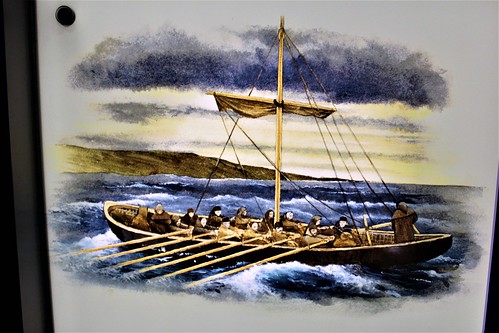
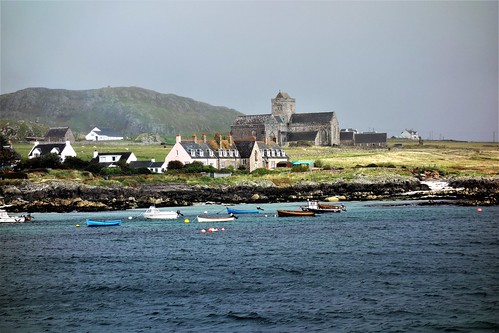


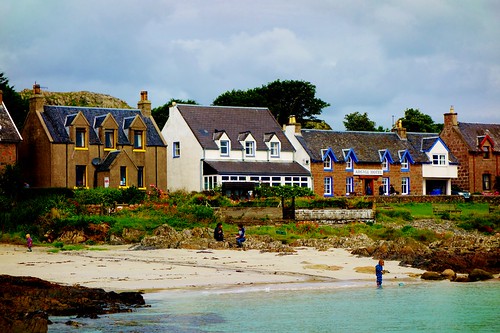


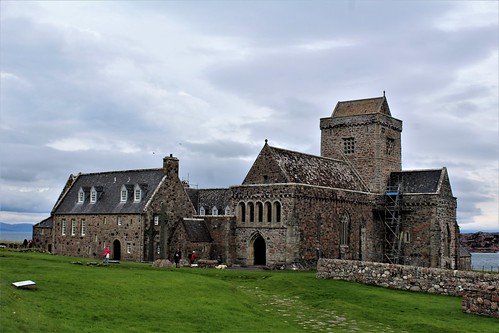

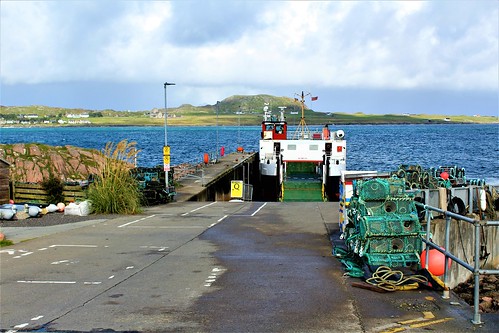

Comments
Post a Comment